Home>Articles>A Guide To Sunroom Construction And Building On A Budget
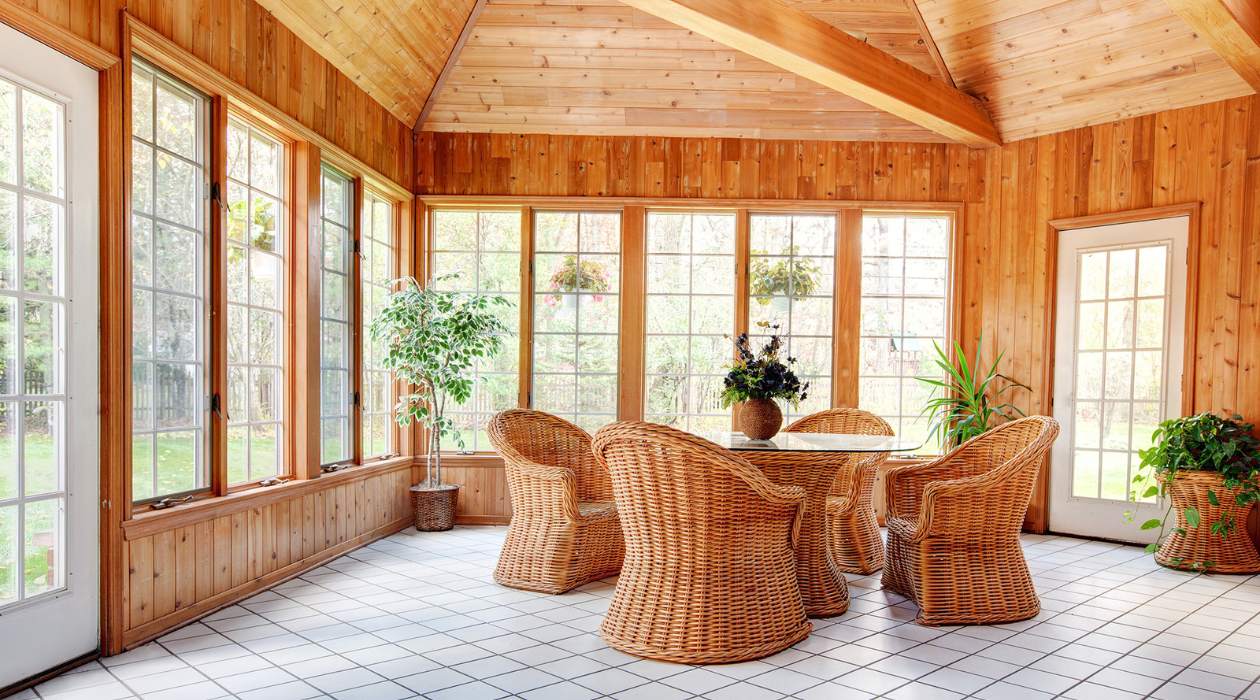

Articles
A Guide To Sunroom Construction And Building On A Budget
Modified: October 29, 2024
Discover affordable tips and tricks for constructing a sunroom on a budget with our insightful articles. From planning to building, create your dream sunroom without breaking the bank.
(Many of the links in this article redirect to a specific reviewed product. Your purchase of these products through affiliate links helps to generate commission for Storables.com, at no extra cost. Learn more)
Introduction
Welcome to our comprehensive guide on sunroom construction and building on a budget. Sunrooms, also known as solariums or glass enclosures, are versatile and attractive additions to any home. These structures provide the perfect balance between indoor and outdoor living, allowing you to enjoy the beauty of nature while being protected from the elements.
In this article, we will explore the various benefits of building a sunroom, the factors to consider before embarking on a sunroom construction project, and provide tips on how to build a sunroom on a budget without compromising quality. Whether you are looking to expand your living space, create a tranquil indoor garden, or simply add value to your property, this guide will provide you with all the essential information you need.
So, let’s dive into the world of sunrooms and discover how you can create the perfect space to relax, entertain, and enjoy the beauty of the outdoors, all while staying within your budget.
Key Takeaways:
- Building a sunroom offers numerous benefits, including increased living space, natural light, and a connection to nature. By carefully considering factors, choosing the right materials, and finding a reliable contractor, you can create a beautiful and functional sunroom that enhances your home and lifestyle.
- When building a sunroom on a budget, consider cost-saving ideas such as simple designs, prefabricated options, and DIY tasks. Prioritize essential features, shop around for materials, and invest in energy-efficient upgrades to create a stunning sunroom while staying within your financial constraints.
Read more: How To Decorate A Small Sunroom On A Budget
Benefits of Building a Sunroom
A sunroom offers a multitude of benefits, making it a popular choice for homeowners. Whether you live in a region with harsh winters or scorching summers, a sunroom can provide a comfortable and inviting space to enjoy the beauty of nature all year round. Here are some of the key benefits of building a sunroom:
- Increased Living Space: Building a sunroom allows you to expand your living space without the need for a traditional room addition. It provides a versatile area that can be used as a lounge, dining room, home office, or even a personal sanctuary.
- Natural Light and Views: Sunrooms are designed to let in ample natural light, creating a bright and airy atmosphere in your home. The large windows provide panoramic views of the surrounding outdoor scenery, allowing you to enjoy beautiful sunsets, lush greenery, or even a winter wonderland.
- Connection to Nature: With a sunroom, you can experience the benefits of the outdoors while being protected from insects, inclement weather, and UV rays. It provides a peaceful retreat where you can relax, read a book, or simply bask in the beauty of nature.
- Year-Round Use: Unlike traditional outdoor spaces, sunrooms can be utilized throughout the year, regardless of the weather conditions. With proper insulation and climate control systems, you can enjoy your sunroom even during the coldest winters or hottest summers.
- Health and Well-being: Natural light is known to have numerous health benefits, including boosting mood, improving vitamin D levels, and promoting overall well-being. Spending time in a sunroom can help reduce stress, increase productivity, and enhance your overall quality of life.
- Increase Property Value: Adding a sunroom to your home can increase its resale value. Potential buyers are often attracted to the added living space and the unique features of a sunroom, which can make your property stand out in the real estate market.
These are just a few of the many benefits of building a sunroom. Whether you are seeking additional space, a connection to nature, or improved well-being, a sunroom offers the perfect solution.
Factors to Consider Before Building a Sunroom
Before embarking on a sunroom construction project, it is important to consider several factors to ensure a successful and enjoyable experience. Taking the time to evaluate these aspects will help you make informed decisions and avoid any potential issues down the line. Here are some key factors to consider before building a sunroom:
- Intended Use: Determine how you plan to use the sunroom. Are you looking to create a cozy reading nook, a space for entertaining guests, or a home office? Understanding the purpose of the sunroom will help you design and customize it accordingly.
- Sunroom Design: Consider the architectural style and design of your home when selecting a sunroom design. Aim for a design that complements the existing structure and blends seamlessly with the overall aesthetics of your property.
- Location: Choose the ideal location for your sunroom. Consider factors such as the direction of sunlight, privacy, accessibility, and views. The location should maximize the amount of natural light while providing a pleasant view of the outdoors.
- Building Codes and Permits: Familiarize yourself with local building codes and regulations regarding sunroom construction. Obtain the necessary permits and ensure compliance with safety standards and zoning restrictions.
- Budget: Determine your budget for the sunroom construction project. Consider all associated costs, including materials, labor, permits, and furnishings. It is essential to have a clear budget in mind to avoid any financial surprises along the way.
- Maintenance Requirements: Understand the maintenance requirements of the materials and components used in the sunroom construction. Consider factors such as cleaning, repairs, and the longevity of different materials.
- Climate Control: Assess the climate conditions in your area. Depending on the region, you may require proper insulation, HVAC systems, or shading options to regulate the temperature in your sunroom and make it comfortable year-round.
- Energy Efficiency: Consider energy-efficient features for your sunroom, such as double-glazed windows, insulation, and solar shading. These features can help reduce energy consumption and contribute to a more sustainable and eco-friendly home.
- Contractor Selection: Take the time to research and select a reputable and experienced contractor for your sunroom project. Request references, view previous work, and obtain multiple quotes to ensure you find a qualified professional who can bring your vision to life.
By carefully considering these factors before building a sunroom, you can ensure that the end result aligns with your needs, preferences, and budget while maximizing the enjoyment and functionality of your new space.
Planning and Designing Your Sunroom
Planning and designing your sunroom is an exciting process that allows you to create a space that reflects your personal style and meets your specific needs. Taking the time to carefully consider the design elements and layout will ensure a sunroom that is both functional and visually appealing. Here are some key steps to help you in planning and designing your sunroom:
- Determine the Purpose: Identify the primary purpose of your sunroom. Will it be used as a relaxing retreat, a dining area, or a space for indoor gardening? Clarifying the purpose will guide you in designing the layout and selecting the appropriate furnishings.
- Set a Budget: Determine your budget for the sunroom construction and design. This will help you make decisions regarding materials, finishes, and additional features. Be sure to factor in any necessary permits or professional fees.
- Consider the Location: Evaluate the location for your sunroom. Take into account factors such as privacy, access to sunlight, and existing views. The location will impact the overall design and layout of your sunroom.
- Choose a Design Style: Explore various design styles for your sunroom, such as contemporary, traditional, or minimalist. Consider the architectural style of your home and aim for a design that complements the overall aesthetics.
- Maximize Natural Light: Incorporate large windows and skylights to maximize natural light in your sunroom. This will create a bright and inviting space while also minimizing the need for artificial lighting during the day.
- Select Suitable Flooring: Choose a flooring material that is durable, easy to clean, and suitable for your sunroom’s intended use. Options include tile, laminate, hardwood, or even outdoor-friendly materials like composite decking.
- Consider Climate Control: Depending on your region’s climate, consider adding features such as ceiling fans, air conditioning, or heating elements to regulate the temperature in your sunroom. This will ensure comfortable year-round use.
- Plan for Storage: Incorporate storage solutions into your sunroom design to keep the space organized and clutter-free. Built-in shelving, cabinets, or furniture with hidden storage compartments are great options.
- Personalize with Furnishings and Decor: Select furniture and decor that align with your intended use and design style. Choose comfortable seating, weather-resistant materials, and accessories that enhance the functionality and ambiance of your sunroom.
- Consider Privacy and Shading: Assess the need for privacy and shading in your sunroom. Options include curtains, blinds, or window films to control sunlight and provide privacy when needed.
Remember, planning and designing your sunroom should be a creative and enjoyable process. Take the time to explore design ideas, consult with professionals if necessary, and tailor the space to meet your specific requirements. By carefully considering these aspects, you can create a sunroom that becomes the perfect sanctuary in your home.
Choosing the Right Materials for Sunroom Construction
Choosing the right materials for sunroom construction is crucial to ensure durability, functionality, and aesthetic appeal. The materials you select will determine the overall quality and longevity of your sunroom. Here are some key considerations when choosing materials for your sunroom:
- Framework: The framework is the skeleton of your sunroom. Common materials used for framework construction include aluminum, wood, and vinyl. Aluminum is lightweight, durable, and low maintenance, making it a popular choice. Wood offers a natural and timeless look, but requires regular maintenance to prevent rot and damage from insects. Vinyl is another durable and low maintenance option.
- Glass: The choice of glass will have a significant impact on the insulation, energy efficiency, and aesthetic appeal of your sunroom. Double-pane or triple-pane insulated glass helps to regulate temperature and reduces energy loss. Low-emissivity (Low-E) glass is designed to reflect heat, keeping the sunroom cool in the summer and warm in the winter. Additionally, consider options for UV protection and tinted glass to minimize fading of furniture and fabrics.
- Roofing: The roof is an essential component of your sunroom, as it provides protection from the elements. Common roofing materials for sunrooms include glass, polycarbonate, or insulated panels. Glass roofs offer a sleek and elegant look, while polycarbonate provides durability and UV protection. Insulated panels offer superior insulation and energy efficiency.
- Flooring: Choose a flooring material that is durable, moisture-resistant, and can withstand varying indoor and outdoor conditions. Options for sunroom flooring include tile, laminate, hardwood, and vinyl. Consider the maintenance requirements and aesthetic appeal of each material when making your decision.
- Insulation: Proper insulation is crucial for maintaining a comfortable temperature in your sunroom throughout the year. Insulated walls, roof, and flooring help to regulate heat and prevent energy loss. The insulation material used will depend on the construction type and climate in your area.
- Finishing Materials: The finishing materials, such as paint, trim, and molding, add the final touch to your sunroom. Choose materials that complement your desired design style and are resistant to fading, moisture, and temperature changes.
- Additional Features: Consider additional features that may enhance the functionality and comfort of your sunroom. This includes options such as ceiling fans, heating or cooling systems, retractable screens, or blinds for privacy and shade.
When selecting materials for your sunroom, it is important to strike a balance between budget, aesthetics, and functionality. Consult with a professional to understand the advantages and limitations of each material and how they align with your specific requirements. By choosing the right materials, you can ensure a sunroom that is not only visually appealing but also durable and enjoyable for years to come.
Read more: How To Build A Sunroom
Finding a Reliable Contractor
When undertaking a sunroom construction project, finding a reliable contractor is essential for a successful and stress-free experience. A reliable and experienced contractor will ensure quality workmanship, adhere to timelines, and provide guidance throughout the construction process. Here are some key steps to help you find a reliable contractor for your sunroom project:
- Research: Begin by conducting thorough research to identify potential contractors in your local area. Ask for recommendations from friends, family, or neighbors who have had sunroom construction done. Online directories and review websites can also provide a list of reputable contractors in your area.
- Credentials and Experience: Look for contractors who hold the necessary licenses, certifications, and insurance. This ensures that they meet professional standards and are qualified to perform the work. Additionally, check their experience in sunroom construction and view their portfolio of completed projects.
- References: Request references from the contractor and follow up by contacting previous clients. Inquire about their experience, satisfaction with the contractor’s work, and whether they would recommend them. This firsthand feedback can provide valuable insight into the contractor’s reliability and professionalism.
- Get Multiple Quotes: Obtain quotes from several contractors for comparison. This will give you an idea of the overall cost, services included, and any variations between contractors. Be wary of significantly low or high bids, as these may be indicators of subpar quality or hidden costs.
- Check Reviews and Ratings: Online reviews and ratings from reputable websites can provide further insight into the contractor’s reputation and customer satisfaction. Take the time to read through both positive and negative reviews to get a balanced perspective.
- Interview Potential Contractors: Schedule consultations with the top contenders and use this opportunity to interview them. Ask about their experience, their process, and their ability to meet your specific requirements. Pay attention to their communication style and whether they address your concerns with professionalism and clarity.
- Written Contract: Once you have selected a contractor, ensure that all project details, scope of work, timelines, payment terms, and warranties are included in a written contract. Review the contract carefully and clarify any uncertainties before signing. This document will serve as a safeguard for both parties throughout the construction process.
- Communication and Transparency: Good communication is essential for a successful contractor-client relationship. Choose a contractor who is responsive, transparent, and readily available to address your questions or concerns. You want someone who will keep you updated on the progress of the project and promptly address any issues that may arise.
- Trust Your Instincts: Ultimately, trust your instincts when selecting a contractor. Choose someone who instills confidence, listens to your ideas, and is committed to delivering a high-quality sunroom that meets your expectations. A good rapport and trust with your contractor will make the entire construction process smoother and more enjoyable.
Investing time and effort into finding a reliable contractor is vital to ensure the success of your sunroom construction project. By following these steps and conducting thorough research, you can find a contractor who will bring your vision to life and create a beautiful and functional sunroom for your enjoyment.
When building a sunroom on a budget, consider using energy-efficient windows and insulation to reduce long-term heating and cooling costs.
Obtaining Permits and Permissions
When undertaking a sunroom construction project, obtaining the necessary permits and permissions is a crucial step to ensure compliance with local building codes and regulations. Failure to obtain the required permits can result in fines, legal issues, and potential safety hazards. Here are some important considerations when obtaining permits and permissions for your sunroom construction:
- Research Local Regulations: Start by researching the specific building codes and regulations applicable to your area. Contact your local building department or visit their website to understand the requirements for sunroom construction. Determine what permits are needed and the associated fees.
- Consult with Professionals: Seek advice from professionals such as architects, contractors, or building inspectors to ensure that your sunroom plans comply with regulations. They can guide you in understanding the specific requirements and any design limitations.
- Prepare Documentation: Gather all the necessary documentation required for permit application. This may include architectural drawings, engineering plans, site plans, product specifications, and proof of insurance. Ensure that these documents accurately depict your sunroom construction project.
- Submit Permit Application: Complete the required permit application forms accurately and provide all relevant supporting documents. Pay the permit fees and submit the application to the appropriate building department. Double-check that all required information is included to avoid delays or rejection.
- Review and Approval: The building department will review your application and plans to ensure compliance with the building codes. They may request revisions or additional information if needed. Be prepared to address any comments or concerns raised by the reviewing officials.
- Inspections: Once your permit is approved, inspections will be conducted at various stages of the construction process. These inspections ensure that the work meets the approved plans and complies with safety standards. Coordinate with the building department to schedule the required inspections.
- Comply with Building Codes: Throughout the construction process, it is important to adhere to the approved plans and building codes. This includes using approved materials, complying with setback requirements, and following construction practices that ensure the safety and structural integrity of your sunroom.
- Final Certificate of Occupancy: After all inspections are successfully completed and any required corrections are made, you will be issued a final certificate of occupancy. This certifies that your sunroom meets all building codes and is safe for occupancy.
- Consult with Legal Experts: If you are a part of a homeowners association (HOA) or reside in a neighborhood with specific restrictions, consult with legal experts to understand any additional permissions or approvals required.
Obtaining permits and permissions for your sunroom construction is a critical step in ensuring a smooth and legal construction process. By being proactive and diligent in following the necessary steps, you can avoid potential issues and enjoy your new sunroom with peace of mind.
Budgeting for Your Sunroom Project
When planning a sunroom project, budgeting is a crucial step to ensure that your vision becomes a reality without stretching your finances. Proper budgeting helps you set realistic expectations, avoid unexpected costs, and make informed decisions throughout the construction process. Here are some key considerations to help you budget for your sunroom project:
- Research and Plan: Begin by researching the average costs of sunroom construction in your area. This will give you an idea of the potential expenses involved. Consider the size, design, materials, and additional features you want for your sunroom and factor them into your budget.
- Obtain Multiple Quotes: Contact several contractors and request detailed quotes for your sunroom project. This will help you compare prices, services, and materials. Be sure to inquire about any potential hidden costs or additional charges that may arise.
- Consider Building Permits and Fees: Account for the cost of building permits and associated fees when budgeting for your sunroom project. These costs can vary depending on your location and the complexity of your project.
- Materials and Labor Costs: Research the cost of materials such as framing, glass, roofing, flooring, and any additional features you plan to include in your sunroom. Additionally, consider the estimated labor costs for the construction and installation of your sunroom.
- Contingency Fund: It is wise to set aside a contingency fund of around 10-15% of your total budget. This ensures that you have some flexibility to address any unexpected expenses or changes that may arise during the construction process.
- Additional Features and Furnishings: Remember to budget for any additional features or furnishings you plan to include in your sunroom, such as furniture, plants, lighting, and decor. These costs should be considered alongside the construction budget.
- Energy Efficiency Upgrades: If you are concerned about long-term energy costs, consider investing in energy-efficient features for your sunroom. These may include insulated glass, energy-efficient HVAC systems, or solar shading options. While they may increase upfront costs, they can provide significant savings in the long run.
- DIY vs. Hiring Professionals: Assess whether you have the skills and knowledge to handle any aspects of the construction process yourself. While a DIY approach can save money, it is important to weigh the potential risks and additional time required against the cost savings. Hiring professionals may ensure a higher-quality result and reduce potential issues.
- Comparison Shop: Take the time to shop around for materials, fixtures, and furnishings. Compare prices from different suppliers to find the best deals without compromising on quality.
- Prioritize: If your budget is limited, prioritize the most essential elements of your sunroom project and consider phasing any non-essential features or upgrades. This allows you to complete the project within your initial budget and make future improvements as your finances allow.
By carefully considering these factors and setting a realistic budget, you can confidently move forward with your sunroom project while ensuring financial stability and achieving the sunroom of your dreams.
Alternative Cost-Saving Ideas for Sunroom Construction
Sunroom construction is an exciting project that adds value and functionality to your home. However, it can also come with a significant price tag. If you’re looking to build a sunroom on a budget, there are several alternative cost-saving ideas that can help you achieve your goals without compromising on quality. Here are some ideas to consider:
- Choose a Simple Design: Opt for a simple and straightforward sunroom design instead of complex and intricate architectural features. A straightforward design can help reduce labor and material costs while still providing a functional and enjoyable space.
- Consider Prefabricated Sunrooms: Prefabricated sunrooms are pre-built structures that can be assembled on-site. They often come in standard sizes and designs, which can save you money on custom architectural plans and construction time.
- Do Some Parts Yourself (DIY): If you have the necessary skills and experience, consider taking on certain aspects of the construction process yourself. This could include tasks like painting, landscaping, or even assembling prefabricated sunroom kits.
- Opt for Simpler Roofing Options: Instead of expensive glass roofs, consider more cost-effective options like polycarbonate panels or shingled roofs. These alternatives can provide insulation and protection while being more budget-friendly.
- Choose Affordable Materials: Look for cost-effective materials that still offer good quality and durability. For example, opt for vinyl or aluminum framing instead of more expensive wood options. Consider lower-cost flooring materials like luxury vinyl or laminate instead of hardwood.
- Minimize Wall Construction: Instead of full wall constructions, consider using floor-to-ceiling windows or glass panels to maximize natural light. This can save on materials and labor costs while still providing the desired openness and connection to the outdoors.
- Optimize Energy Efficiency: Invest in energy-efficient features to save on long-term energy costs. Choose insulated glass and consider additional insulation for the walls and roof. Install energy-efficient HVAC systems and consider natural ventilation options to reduce the need for excessive heating or cooling.
- Shop for Deals and Discounts: Take the time to research and compare prices for materials, fixtures, and furnishings. Look for sales, discounts, and clearance items to maximize your budget without compromising on quality.
- Consider Used or Recycled Materials: Explore the option of using reclaimed or recycled materials for your sunroom construction. Salvaged windows, flooring, or even furniture can give your sunroom a unique and eco-friendly touch at a lower cost.
- Plan for Future Expansion: If your budget is tight, consider building a sunroom that can easily be expanded in the future. Start with a smaller footprint or leave room for future additions. This allows you to enjoy your sunroom while leaving room for growth as your budget allows.
These alternative cost-saving ideas can help you build a beautiful and functional sunroom without breaking the bank. Remember to prioritize your needs, strike a balance between cost and quality, and consult with professionals to ensure a successful and cost-effective construction process.
Read more: How To Build A Sunroom On A Patio
Tips for Building a Sunroom on a Budget
Building a sunroom on a budget requires careful planning and resourcefulness. While it may seem challenging, there are several tips and strategies that can help you save money without compromising on quality. Here are some valuable tips for building a sunroom on a budget:
- Set a Realistic Budget: Begin by determining your budget for the sunroom project and stick to it. Be sure to account for all expenses including materials, permits, labor, and furnishings. Having a clear budget in mind will help you make informed decisions and avoid unnecessary expenses.
- Prioritize Features: Identify the essential features and elements you want in your sunroom. Focus your budget on these priorities and consider scaling back on less critical elements. This way, you can allocate your resources where they matter most and still achieve a functional and enjoyable space.
- Consider Prefabricated or DIY Options: Explore prefabricated sunroom kits or consider taking on certain tasks yourself if you have the necessary skills and experience. Prefabricated kits often come at a lower cost and can be assembled with basic tools. DIY projects can save money on labor costs, but be sure to assess your capabilities beforehand.
- Opt for Simple and Functional Design: When designing your sunroom, opt for simplicity and functionality. Avoid excessive architectural embellishments or complicated designs that can drive up costs. Focus on creating a space that meets your needs and complements the existing aesthetics of your home.
- Shop Around for Materials and Supplies: Take the time to compare prices from different suppliers and retailers for materials and supplies. Look for deals, discounts, or clearance sales to find quality products at a lower cost. Consider purchasing in bulk or coordinating with other homeowners in your area to negotiate better prices.
- Reuse or Repurpose Materials: Consider reusing or repurposing materials wherever possible. Salvage windows, doors, or flooring from renovation projects or inquire about discounted or surplus materials from construction sites. This not only saves money but also gives your sunroom a unique and eco-friendly touch.
- Keep the Layout Simple: Opt for a straightforward layout to minimize construction costs. Avoid complex floor plans with multiple angles or custom features that require additional labor and materials. Simple rectangular or square spaces are more cost-effective to build while still offering functionality.
- Energy Efficiency for Long-term Savings: Invest in energy-efficient materials and systems to reduce long-term energy costs. Choose insulated glass, add proper insulation to the walls and roof, and consider energy-efficient HVAC options. These investments may have higher upfront costs but can result in significant savings over time.
- Plan for Future Expansion: If your budget is limited, consider building a sunroom that can be easily expanded in the future. Start with a basic structure that can accommodate future additions or modifications when your budget allows. This allows you to enjoy your sunroom while leaving room for growth.
- Get Multiple Quotes and Negotiate: Obtain quotes from different contractors and suppliers. Compare prices and negotiate when possible. Seek referrals or recommendations from friends or family to find reliable and cost-effective professionals for your sunroom project.
Building a sunroom on a budget requires thoughtful planning, research, and creative thinking. By incorporating these tips, you can create a beautiful and functional sunroom that meets your needs while staying within your budgetary constraints.
Maintenance and Care for Your Sunroom
Proper maintenance and care are crucial to ensure the longevity and enjoyment of your sunroom. By following a regular maintenance routine and taking necessary precautions, you can keep your sunroom in optimal condition for years to come. Here are some key tips and guidelines for maintaining and caring for your sunroom:
- Cleaning: Regularly clean your sunroom to remove dust, dirt, and debris. Use a mild soap or a vinegar-water solution to clean the windows, frames, and surfaces. Avoid using abrasive cleaners or tools that can damage the materials.
- Inspect for Damage: Periodically inspect your sunroom for any signs of damage or wear. Look for issues such as cracked glass, damaged frames, loose caulking, or water leaks. Address any problems promptly to prevent further damage and ensure a safe environment.
- Window and Door Maintenance: Check the functionality of windows and doors regularly. Lubricate hinges, locks, and handles to prevent sticking or squeaking. Replace any damaged weatherstripping to ensure proper insulation and energy efficiency.
- Gutter Maintenance: If your sunroom has gutters, clean them regularly to prevent clogging and water buildup. Clear out leaves, debris, and other obstructions that can impede proper drainage. This helps to prevent water damage and ensures the structural integrity of your sunroom.
- Roof and Skylight Inspection: Inspect the roof and skylights for any signs of damage, such as cracks or leaks. Clean debris and remove any moss or algae growth. If necessary, repair or replace damaged roofing materials to maintain the integrity of your sunroom.
- Manage Sunlight and Temperature: Use window treatments such as blinds or shades to control sunlight and temperature in your sunroom. This helps protect furniture and fabrics from fading and prevents excessive heat buildup during hot seasons.
- Monitor Humidity: Pay attention to the humidity levels in your sunroom, as excessive moisture can lead to mold or mildew growth. Use a dehumidifier if needed, and ensure proper ventilation to maintain a comfortable and mold-free environment.
- Protect Flooring: Take preventive measures to protect your sunroom’s flooring. Place mats or rugs near entryways to trap dirt and prevent scratching. Use furniture pads or glides to avoid scratching or damaging the floor when moving furniture.
- Regular Inspections: Schedule regular professional inspections of your sunroom, especially for structural elements like frames, foundations, and roofing. This allows for early detection and prevention of any potential issues that may compromise the safety and functionality of your sunroom.
- Seasonal Maintenance: Perform seasonal maintenance tasks such as cleaning gutters, adjusting window screens, and inspecting seals and weatherstripping. This ensures that your sunroom is prepared for seasonal changes and remains in optimal condition throughout the year.
- Follow Manufacturer’s Guidelines: Consult the manufacturer’s guidelines and recommendations for specific maintenance requirements of your sunroom materials. This includes any cleaning products to avoid or specific maintenance procedures to follow, ensuring the longevity and warranty coverage of the materials.
By following these maintenance tips and caring for your sunroom regularly, you can extend its lifespan and maximize your enjoyment of the space. Remember that preventative maintenance is key to preventing major issues and ensuring that your sunroom remains a beautiful and functional addition to your home.
Conclusion
Building a sunroom is an exciting endeavor that allows you to create a beautiful and versatile space in your home. Whether you’re looking to expand your living area, bring in more natural light, or create a peaceful retreat, a well-designed and properly constructed sunroom can add value and enjoyment to your property.
Throughout this comprehensive guide, we’ve explored the various aspects of sunroom construction and building on a budget. From understanding the benefits of a sunroom to considering factors before construction, planning and designing the space, choosing the right materials, finding a reliable contractor, obtaining permits, budgeting, cost-saving ideas, and maintenance, we’ve covered it all.
By following the tips provided, you can embark on your sunroom construction project with confidence and make informed decisions along the way. Remember to set a realistic budget, research materials and contractors, prioritize your needs, and consider cost-saving measures without compromising on quality. Regular maintenance and care will ensure that your sunroom remains in excellent condition and continues to be a source of joy for years to come.
As you embark on your sunroom journey, keep in mind that every step requires thoughtful consideration and planning. Take the time to thoroughly research and understand your options, consult with professionals, and prioritize your needs and budget. With proper planning, creativity, and attention to detail, you can create a sunroom that perfectly complements your lifestyle and enhances the beauty of your home.
So, what are you waiting for? Let your sunroom dreams take shape and enjoy the benefits of this delightful addition. Whether you’re basking in the warmth of the sun or enjoying the views of nature, your sunroom will undoubtedly become a cherished space that brings you joy and relaxation for years to come.
Frequently Asked Questions about A Guide To Sunroom Construction And Building On A Budget
Was this page helpful?
At Storables.com, we guarantee accurate and reliable information. Our content, validated by Expert Board Contributors, is crafted following stringent Editorial Policies. We're committed to providing you with well-researched, expert-backed insights for all your informational needs.


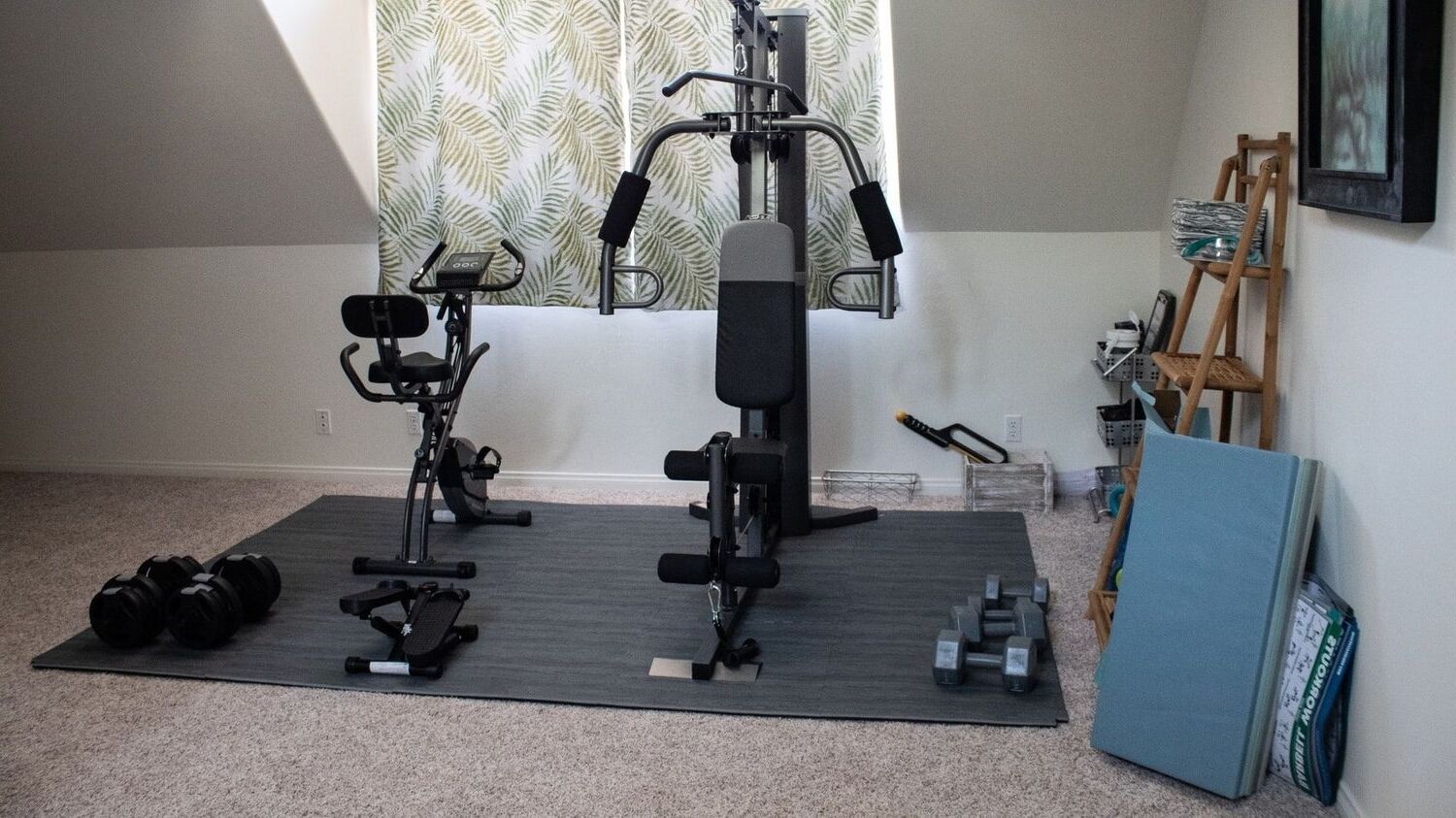



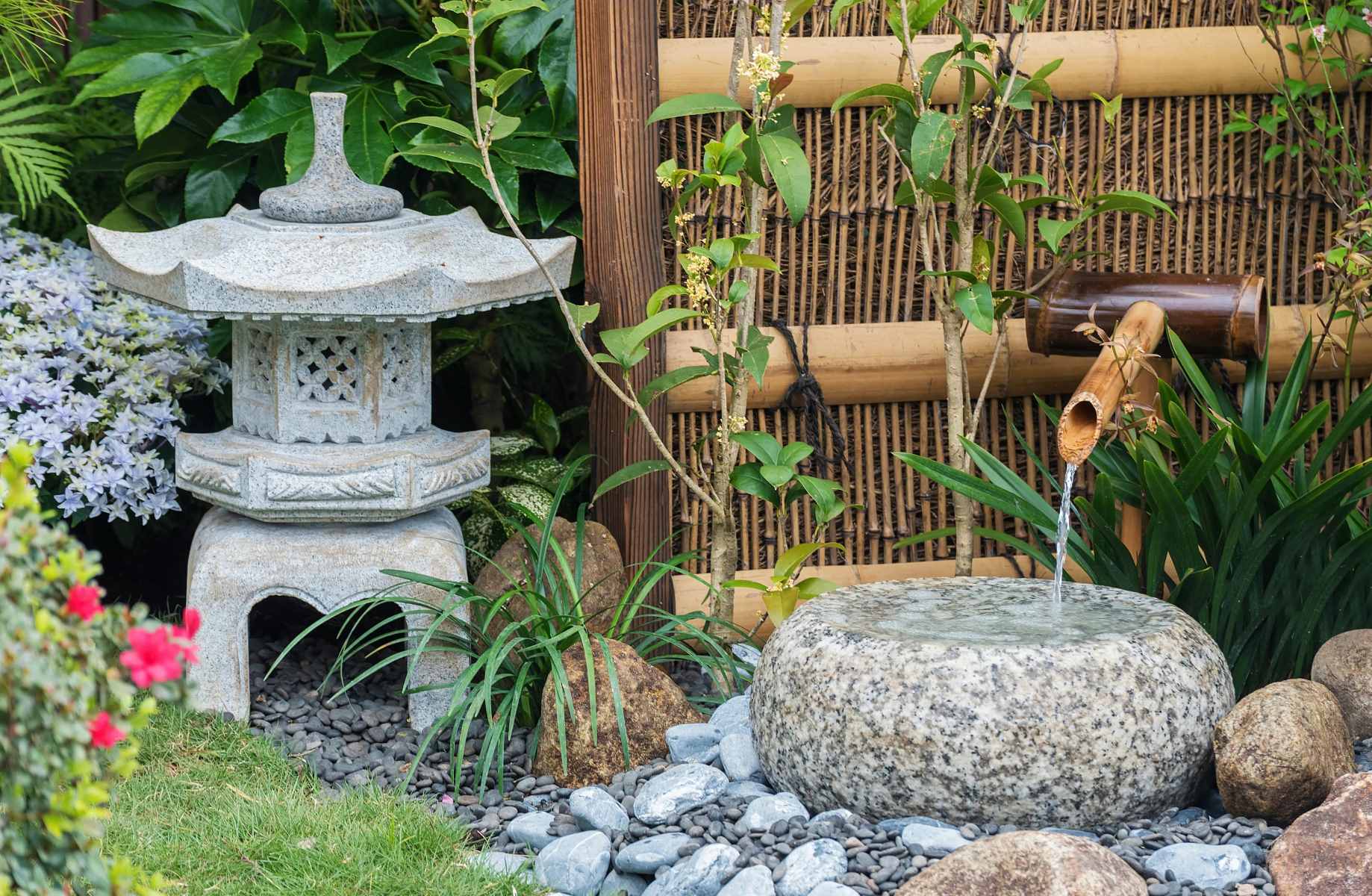
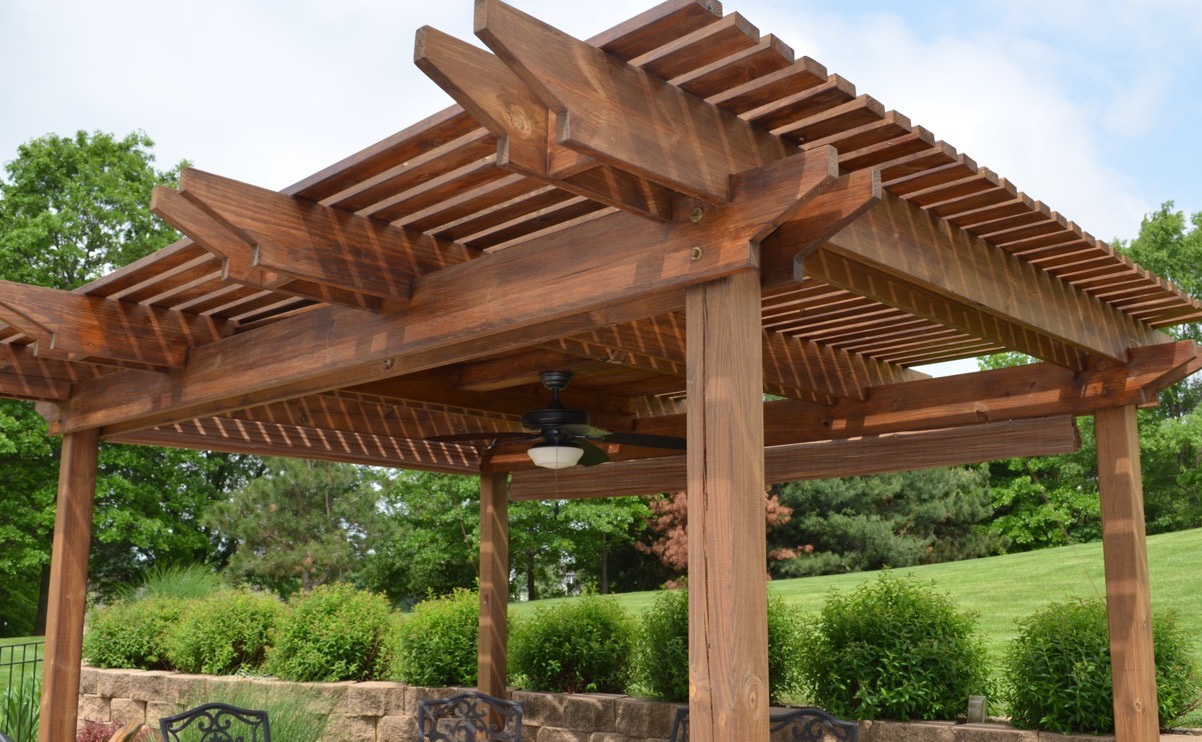
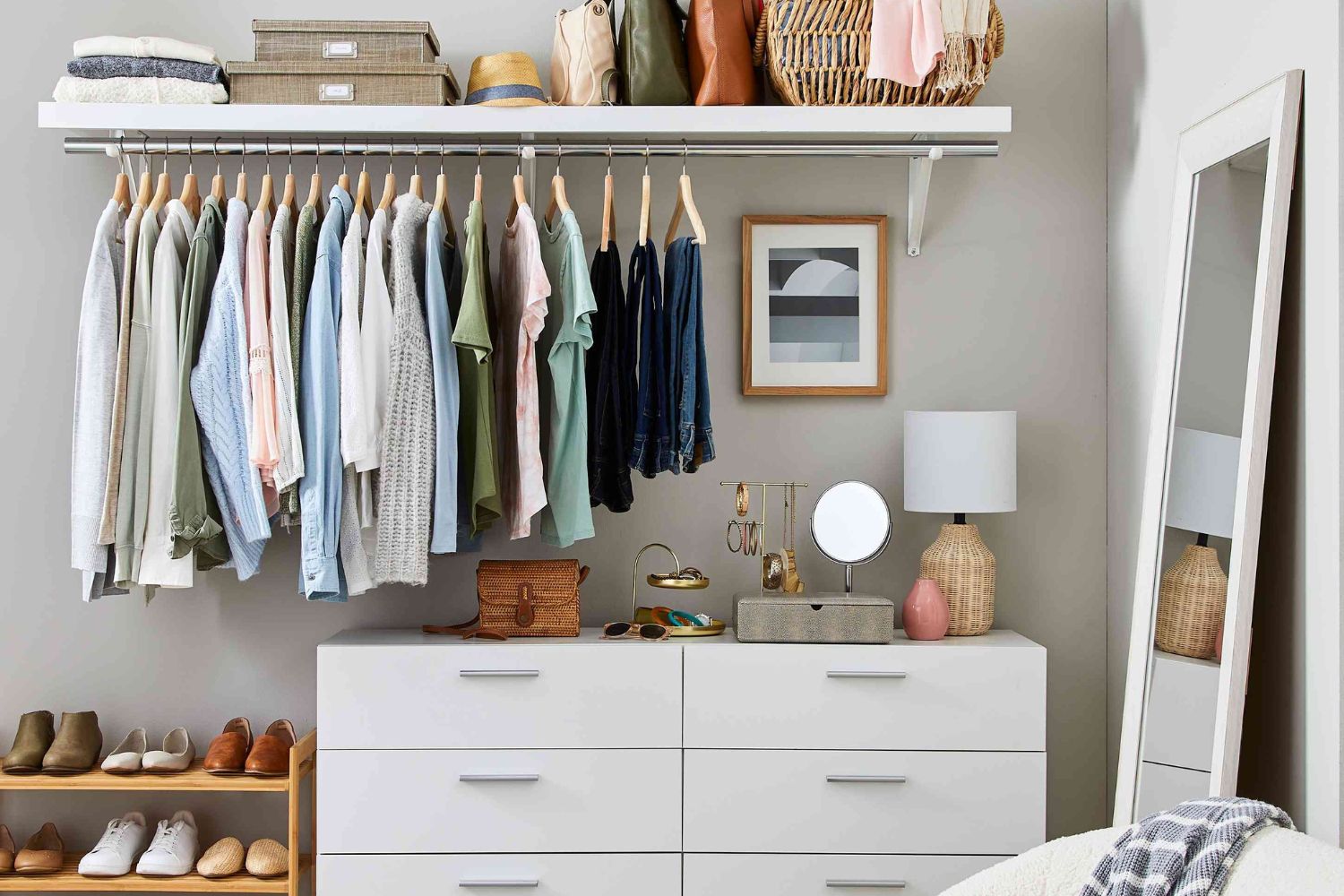
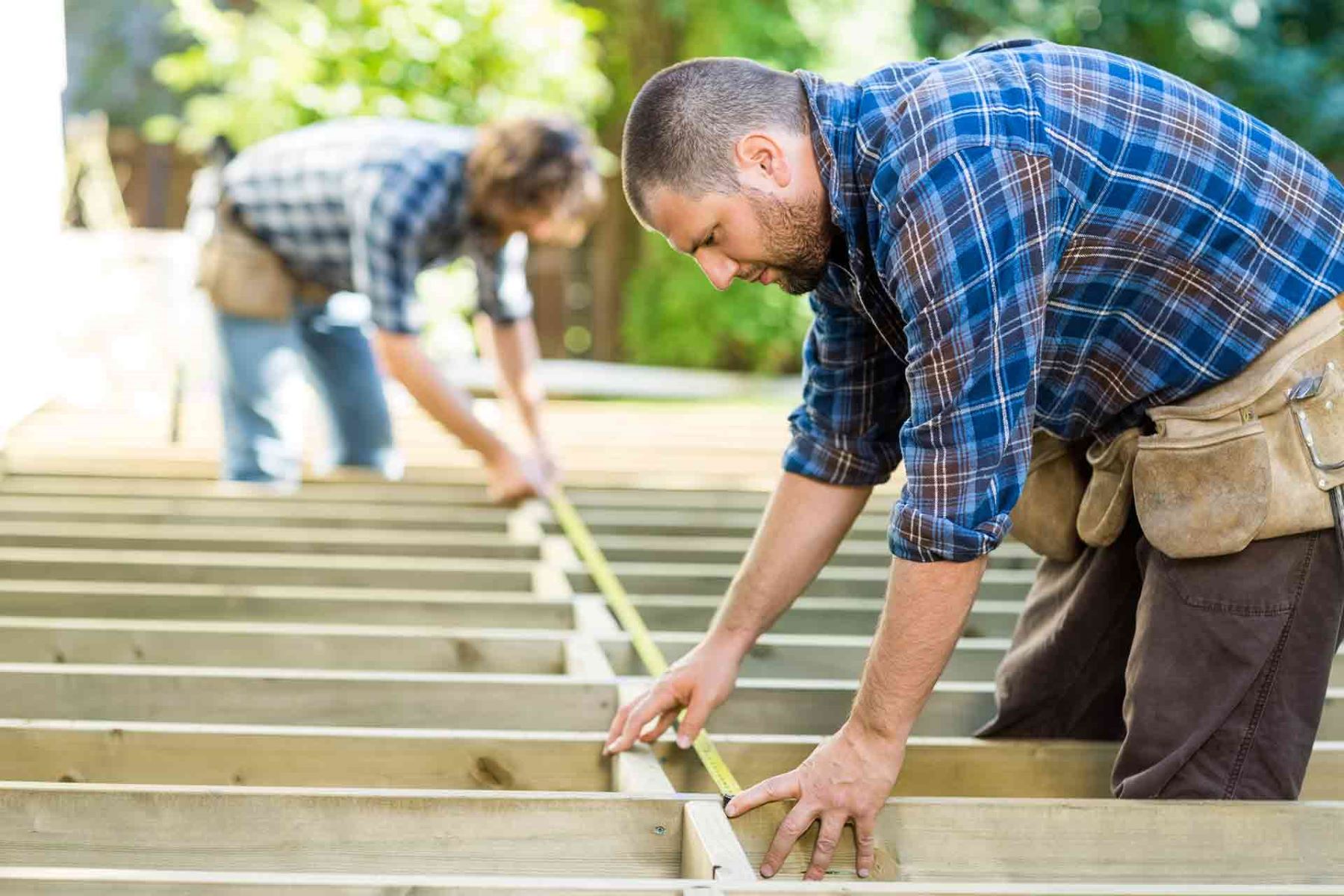
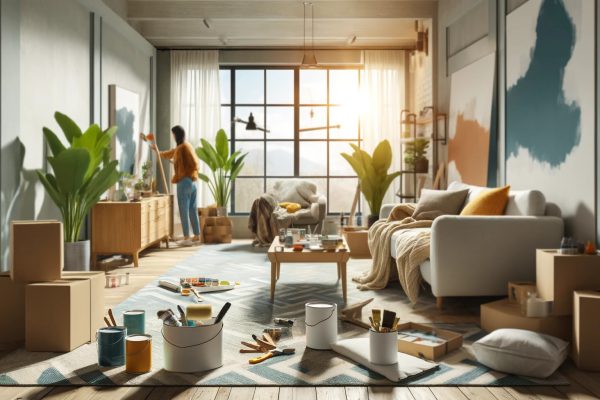
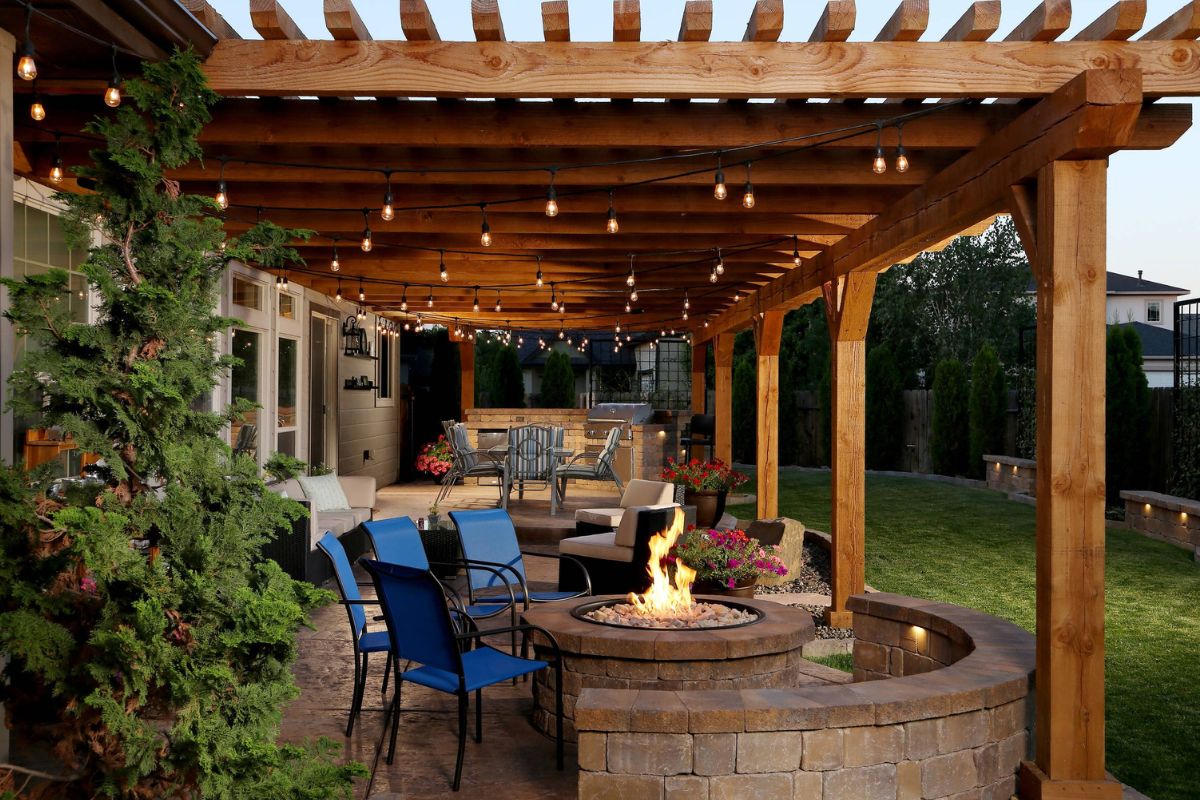
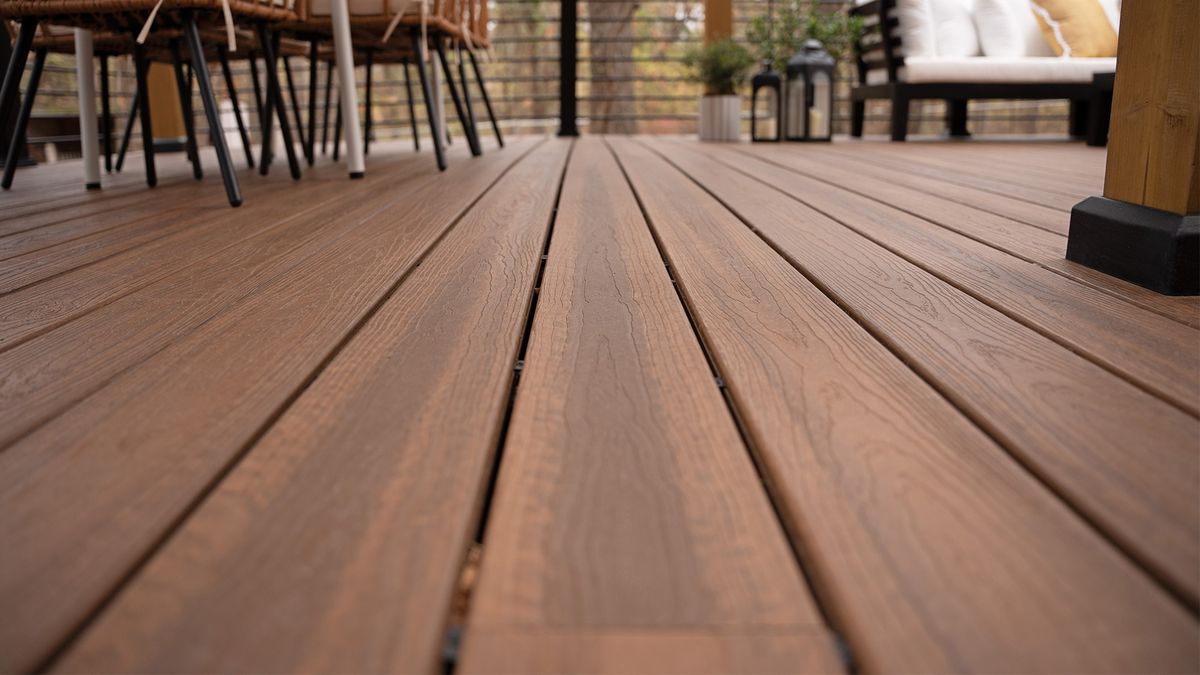

0 thoughts on “A Guide To Sunroom Construction And Building On A Budget”